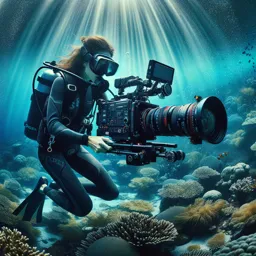Acting is a complex and multifaceted art form that involves bringing characters to life through performance. It requires a deep understanding of human behavior, emotions, and psychology, as well as the ability to convey these elements convincingly to an audience. Here are some of the most influential techniques and methods in the world of acting.
1. Stanislavski’s System
Konstantin Stanislavski is often regarded as the father of modern acting. His system, developed in the early 20th century, emphasizes the importance of an actor’s internal life and emotional truth. Key components of Stanislavski’s system include:
- Emotional Memory: Drawing on personal experiences to evoke authentic emotions.
- Given Circumstances: Understanding the context in which a character exists, including their background, environment, and relationships.
- Objectives and Super-Objectives: Determining what a character wants (objectives) and their overarching goals (super-objectives) throughout the play.
- Subtext: Exploring the underlying meaning of dialogue and actions beyond the literal words spoken.
2. Method Acting
Method acting, derived from Stanislavski’s system, was further developed by practitioners such as Lee Strasberg, Stella Adler, and Sanford Meisner. Method acting encourages actors to fully immerse themselves in their roles, often blurring the lines between the actor’s real life and the character’s life. Key aspects include:
- Sense Memory: Using sensory experiences to relive emotions and physical sensations.
- Character Immersion: Adopting the character’s habits, speech patterns, and even lifestyle to portray them convincingly.
- Improvisation: Allowing actors to explore their characters in spontaneous, unscripted scenarios.
3. Meisner Technique
Sanford Meisner developed his own approach to acting, emphasizing spontaneity and authenticity. The Meisner Technique focuses on:
- Repetition Exercises: Actors repeat simple phrases to each other, allowing them to react naturally and instinctively.
- Moment-to-Moment Work: Staying present and fully engaged in each moment of the performance.
- Emotional Preparation: Preparing emotionally for a scene by recalling personal experiences or imagining specific scenarios.
4. Practical Aesthetics
Developed by playwright David Mamet and actor William H. Macy, Practical Aesthetics is a straightforward approach to acting that combines elements of Stanislavski’s system with a focus on the script. Key elements include:
- Literal Analysis: Understanding the literal meaning of the text.
- The “As If” Technique: Relating the character’s situation to a similar, imagined scenario in the actor’s own life.
- Objective: Defining what the character wants in each scene.
- Action: Determining the best way to achieve the character’s objectives.
5. The Chekhov Technique
Developed by Michael Chekhov, this method emphasizes the use of imagination and physicality in acting. Key concepts include:
- Psychological Gesture: Using specific physical movements to evoke a character’s internal state.
- Atmosphere: Creating a sense of the character’s environment and emotional landscape.
- Imaginary Body: Transforming one’s physical presence to embody the character fully.
Conclusion
Acting techniques and methods are diverse, each offering unique tools for actors to create believable and compelling performances. Whether drawing from personal experience, imagination, or script analysis, actors employ a range of strategies to inhabit their characters and connect with audiences. Understanding and mastering these techniques can help aspiring actors develop their craft and bring characters to life on stage and screen





















